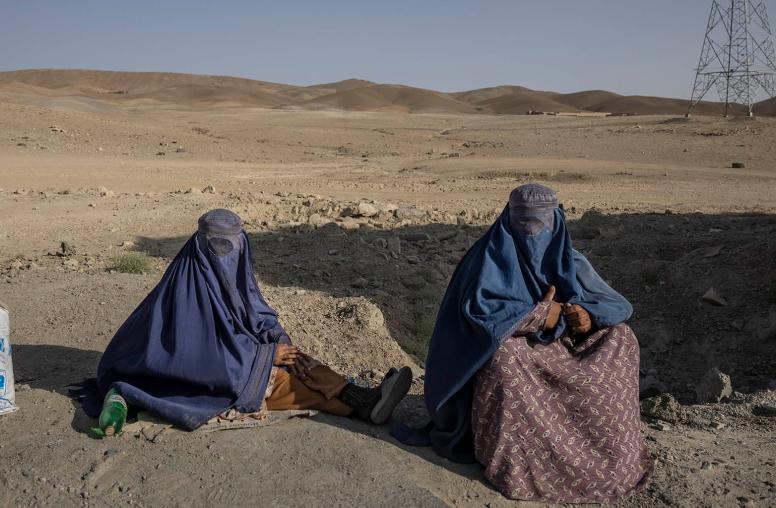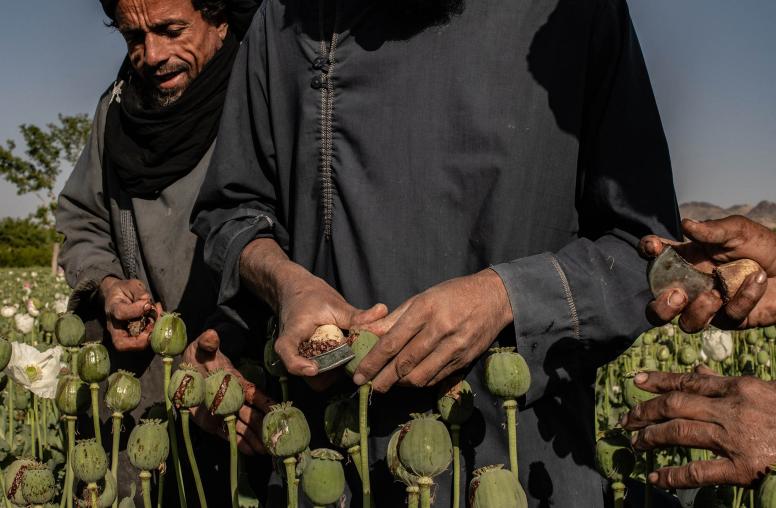A peace deal between the U.S. and Taliban is reportedly imminent. That deal would pave the way for intra-Afghan talks aimed at setting the course for the country’s political future. After the 18-year U.S. war and decades of conflict prior, Afghans overwhelmingly want an end to the violence that plagues their country every day. While this official diplomacy is an important first step, there is also much to be done at the grassroots level to build peace in Afghanistan.

Conflict and violence are ingrained in Afghan society. It can break out anywhere—at school or university, in a market, or at home. Such deeply rooted violence has a profound impact on the mental health of Afghans. The World Health Organization estimates that as many as 2 million Afghans suffer from depression and anxiety. After four decades of conflict, Afghans desperately need the skills to build peace at home, in their communities, and beyond. Although a peace deal might provide Afghanistan with a framework for the future, a truly sustainable peace must address the personal and collective trauma that conflict has caused over the years.
Enabling the Next Generation of Leaders
In a war-wracked society like Afghanistan, youth are particularly vulnerable targets for recruitment by radical groups and violent extremists. To prevent recurring cycles of violence and the rise of the next generation of extremism, Afghan youth need skills and training to build their capacity to resolve conflict without resorting to violence.
To that end, since 2014, the U.S. Institute of Peace has worked with public and private universities in six provinces—Herat, Kabul, Kandahar, Kapisa, Khost, and Nangarhar—to build conflict resolution and peacebuilding skills among students and faculty. Using participatory learning methods, this peace education curriculum provides students with the practical skills to identify sources of conflict and the know-how to deescalate tensions and negotiate peaceful solutions.
“During the current circumstances, where peace talks between the U.S. and Taliban are in progress, [Afghan] society urgently needs conflict resolution and peacebuilding skills,” said Ehsan Zia, USIP’s country director in Afghanistan.
The workshop training has been developed into a two-credit course, accredited by the Afghan Ministry of Higher Education, and is currently taught at six universities in Afghanistan. Over 5,000 Afghan students have taken the course and 90 faculty have been trained to teach it. Several of the universities have even begun making the course a mandatory elective for their students.
The Ripple Effect of Peace Education
It’s an opportune moment for young Afghans to engage with this material. With a peace deal potentially on the way, they now have an opportunity to end cycles of violence that have ravaged their country for decades—and they are seizing the moment. After completing the course, students at each of the six universities have formed peace clubs and peace centers, and organized over 60 activities, including debates, site clean-ups, essay writing competitions, and blood drives.
The peace club at Nangarhar University started with 20 male students, but has grown to over 200 members, with both male and female participants. "The Peace Club at Nangarhar University is now a safe haven where students get an opportunity to come up with new peace-oriented ideas and group activities,” said Assistant Professor Naeem Jan Sarwary, who is the coordinator of the Peace Center at the University. “Today students organize events such for international peace day, Human Rights Day, and hold national peace conferences. They also enthusiastically volunteer in debates, initiating blood drives, fund raising for affected people, and conducting conflict resolution and peacebuilding sessions on campus and outside of the university.”
Parisa Sikandari, a senior studying law and political science, is the current president of Herat University’s peace club. “Like most students at Herat University I assumed that peace in society is only possible from top to bottom … [but] by becoming a member of the peace club that mindset changed,” Sikandari said. “As the president of peace club, I work with male and female students for sustainable peace in Afghanistan through resolving conflicts on campus, at home and the community.”
Students have said the training has helped them believe that peace is possible—even in a place like Afghanistan. “After attending the training, I realized that war starts in the mind of individuals, so it is important to work on the mind,” said Hassina Qayumi, who attended a workshop in Kabul. “Once the mind is free of violence, there would be no room for conflict.”
Last year, another student who took the course joined the grassroots People’s Peace Movement, which emerged in Helmand Province to demand an end to violence. “I found the conflict resolution and peacebuilding workshop very useful as it focused on the grassroots level. The training concepts changed my perception of seeing issues and their resolution,” said Hassan Poya from Herat province. “The important element I realized was that the training methodology and materials were well contextualized to the conditions of Afghanistan ... We have developed a plan based on which we first identify problems in the community and then come up with ways to resolve them.”
Elsewhere, Abdul Qayim Aziz, a religious scholar in Herat who participated in the training, decided to incorporate lessons into his Friday sermons, explaining the importance of nonviolence, tolerance, and acceptance to over 700 hundred men and 70 women.
Expanding Reach
Children in Afghanistan have known nothing but war. This generation needs a vision for an Afghanistan that is free of violent conflict. So, in 2015, USIP expanded its peace education efforts in Afghanistan by partnering with Help the Afghan Children (HTAC) to develop a peace education curriculum for grades 7-12. To date, HTAC has trained 1,800 teachers at six teaching colleges, and the curriculum is currently part of a pilot program being conducted by the Afghan Ministry of Education. In the end, the goal is to help build the next generation of peacebuilders.
With the possibility that 40 years of war could soon end, the transition away from active conflict will require Afghans—especially youth leaders—to rethink how they understand conflict and to learn how to create peace in their communities. There’s no shortage of hope—the Asia Foundation’s annual survey of Afghans revealed that, in 2018, 53.5 percent of Afghans believed that reconciliation between the Afghan government and the Taliban is possible. For such reconciliation to be possible, it will have to be reinforced at the grassroots level. Through peace education, young Afghans are building their capacity to help move the country toward a more peaceful, inclusive society.
Ahmad Jawed Samsor is a program manager for peace education with the U.S. Institute of Peace in Kabul. Muhammad Idrees is a research assistant with the U.S. Institute of Peace in Kabul.



